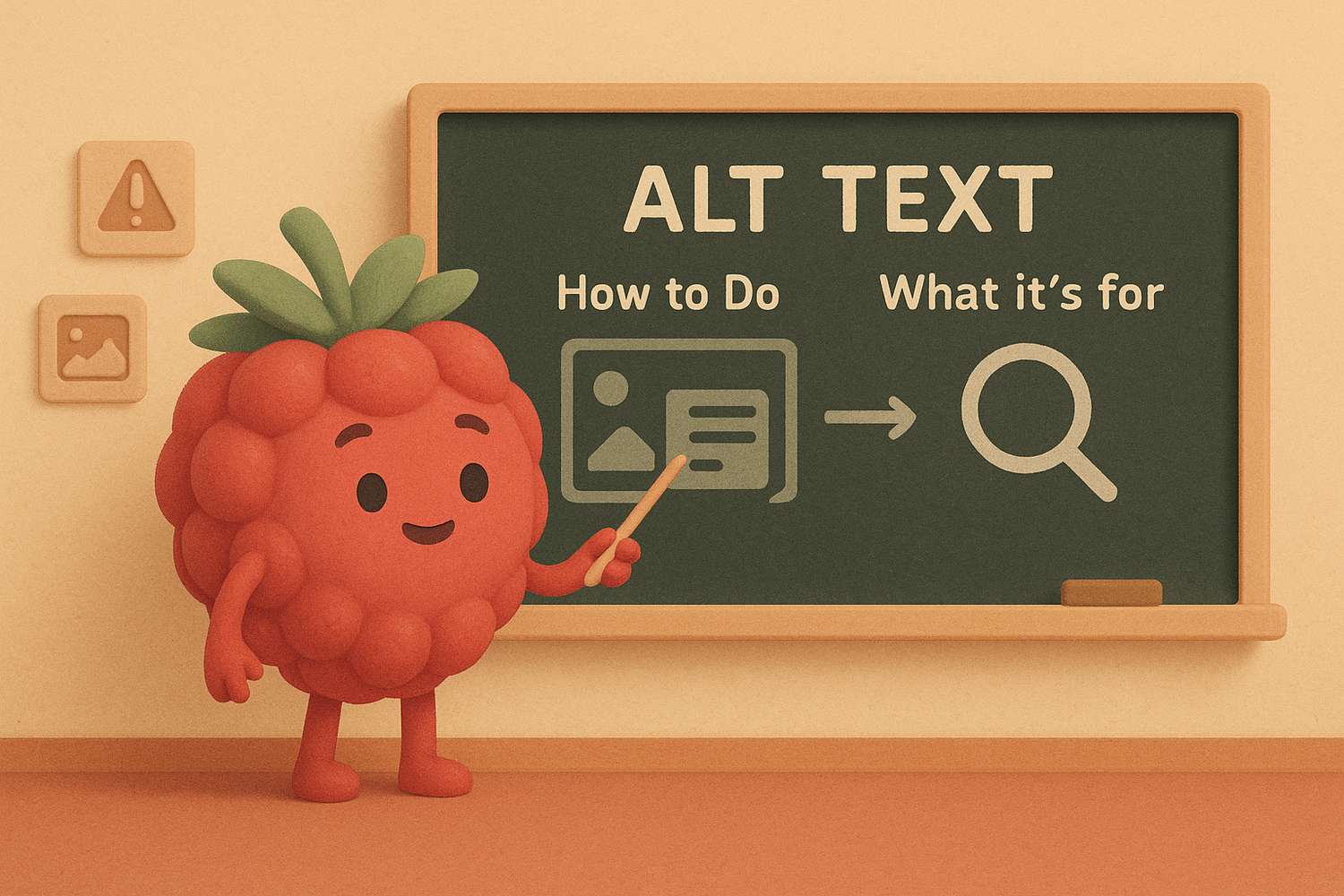Alt texts are a key element of accessible and search engine-friendly websites. They describe the content of images, making it understandable for screen readers and visible to search engines. When used correctly, they enhance both user experience and visibility in Google search.
Table of contents
Table of contents
What is an ALT text?
An ALT text (alternative text) is a short description of an image, embedded in the HTML code of a website. It appears if the image fails to load and enables screen readers to convey the image’s message. At the same time, alt texts provide search engines with valuable context – a boost for image SEO.
What makes a good ALT text?
✓ Clear and concise
ALT texts should be easy to understand and to the point. Unnecessary details only distract.
✓ Contextual
The description should match the page’s content and support the purpose of the image.
✓ Naturally written, not keyword-stuffed
Relevant keywords can be included but must fit naturally into the text.
✓ Technically correct
Decorative images should use an empty alt="" so screen readers can skip them. Informational graphics should also be described in more detail elsewhere on the page.
Why ALT texts matter
✓ Enhance accessibility – People with visual impairments can fully engage with content.
✓ Boost SEO – Search engines better understand image content, improving image search rankings.
✓ Improve user experience – Even with slow connections, image content stays accessible.
✓ Ensure legal compliance – Alt texts are required under accessibility regulations such as the EAA.
Conclusion
ALT texts may be small, but they make a big difference. They expand reach, meet legal requirements, and ensure that digital content is accessible to all – with minimal effort and maximum impact.
